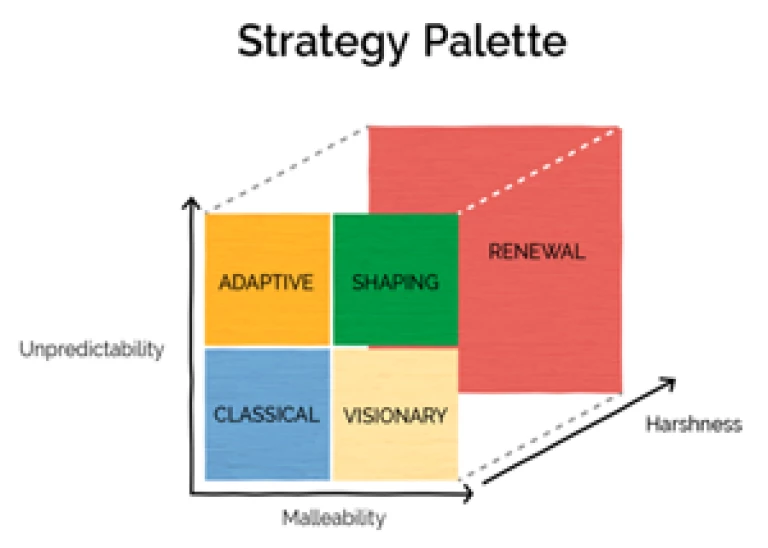In this interview with the British-American Business Council, BCG's Martin Reeves discusses how the changing relationship of strategy and innovation requires new things of leaders.
What is the traditional relationship between strategy and innovation? How is a more dynamic business environment changing that?
Traditionally, strategy and innovation were treated as different activities. Strategy was about the things you could plan. And there was a lot that you could plan, with confidence, in the relatively stable period from the 1960s up to the mid-1980s. Innovation was more about the unplannable, the occasional leaps in imagination and creativity in products or technology that renewed the strategy.
But with the increasing dynamism and unpredictability of today's business environment—driven by technology, globalization, and other factors—innovation has become increasingly vital to success, and strategy and innovation are converging. In many cases, innovation has become the heart of strategy.
Importantly, today's business landscape is characterized by an increasing diversity of environments—some companies operate in stable environments, others in quite unstable ones. This means that companies must tune the relationship between innovation and strategy to their specific situation. One size doesn't fit all.
Some pundits believe that classic sources of competitive advantage are eroding and that strategy is therefore in danger of becoming obsolete. Do you agree?
In aggregate, classic sources of advantage—position and scale—are indeed eroding, though it varies by environment. But that doesn't make strategy any less critical. Indeed, strategy is more important than ever, since making the right choices has bigger and bigger consequences. The performance gap between the top and bottom quartiles of U.S. companies, for example, has risen to historically unprecedented levels.
You mentioned an increasing diversity of business environments. Can you expand on how that affects strategy and innovation?
The expanding diversity of business environments means that we need a corresponding range of approaches to strategy. The challenge is to pick the right approach for the right environment.

|
BCG has designed a framework we call the strategy pallete to facilitate these decisions. It consists of five archetypal approaches to strategy that are suited to different business environments, defined along three dimensions: predictability, malleability, and harshness. Each environment necessitates a different approach to strategy and execution. In classical environments, which are highly structured and predictable, companies can win by leveraging position strategies based on size, differentiation, or capabilities. Adaptive environments, which are characterized by rapid change and unpredictability, demand continuous experimentation. Visionary environments, which are predictable and malleable, can be conquered by creating a new market or disrupting an existing one. In a shaping environment, one that is unpredictable but malleable, a company can shape an industry to its advantage by orchestrating the activities of other stakeholders. Finally, in a renewal environment, one in which a company's viability is threatened, the company must conserve resources to ensure its survival and then choose one of the other four approaches to rejuvenate growth.
The role of innovation is different in each of these. In a classical approach, for example, innovation is typically incremental, occasional, and occurs mainly at the product level. In an adaptive approach, innovation is fast, continuous, and occurs not just at the product level but at the business model level.
How can CEOs prepare their companies for the future without compromising the present?
CEOs must recognize that their job is no longer solely to run the company. Rather, they must both run and reinvent it at the same time. This demands that leaders are ambidexterous—able to apply multiple approaches to strategy sequentially or simultaneously in different parts of the business. Now, how do you optimize something while reinventing it? There are a numerous ways, in fact, ranging from separating units using different approaches to creating a self-organizing ecosystem.
How do leaders need to think differently about their roles in this increasingly complex world?
Leaders should view themselves as animators of the strategy collage—the combination of multiple approaches to strategy that emerges from application of the strategy palette. A leader's task is to keep this collage dynamic and in tune with the environment and make sure it doesn't get "stuck" due to organizational inertia. A leader can do so by asking the right questions, challenging prevailing presumptions, and putting his or her weight behind critical change initiatives.
This commentary was originally published by the British-American Business Council.






